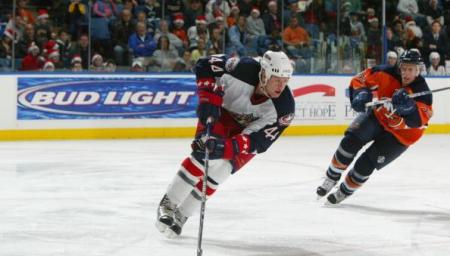Patrick’s comment yesterday on the Aaron Johnson post regarding the QMJHL interested me. He mentioned that someone in the front office seems to really like players from the Q, but they tend not to pan out. Patrick also noted that the Q is regarded as the weakest of the three Canadian junior leagues. While the latter statement is not easily quantifiable by me, the first is pretty easy to view.
What I can say regarding the competitiveness of the three leagues is this: since the creation of the QMJHL (the youngest of the three) in 1969, here is the breakdown of Memorial Cup champions by league.
- Western Hockey League: 17
- Ontario Hockey League: 14
- Quebec Major Junior Hockey League: 8
So on a very base level of judging competitiveness, Patrick is correct that the Q is the lesser of the three leagues. (Stat freaks and fans of the Q, please note that this is a broad statement made for the purposes of moving on to the next point and not intended to indict the Q in any way. Q fans especially may want to keep reading.) Moving on…
In the last seven years (junior league information was not readily available on NHL.com for draftees in 2000 and I’m lazy to take the five minutes it would require to complete the results), the Columbus Blue Jackets have drafted 71 players. Here is a breakdown of the top five leagues/countries and the average draft position of a player selected by the CBJ from that league.
- Ontario Hockey League: 13 players, average pick of 113
- Quebec Major Junior Hockey League: 11 players, average pick of 102
- Western Hockey League: 9 players, average pick of 129
- Russia: 7 players, average pick of 131
- Various high school leagues: 6 players, average pick of 155
This does give me a little insight. Columbus drafts players from the Q at a higher average position than any other group. But this also includes a slew of players who very likely were not expected to make the NHL (I’m just rambling so I sound smart, you can quit reading at any time), so I decided to only include picks in the first three rounds (1-90) and reevaluate. I know that with the limited history of the Blue Jackets drafts this will not be a great statistical sample, but I don’t care. The results?
- Ontario Hockey League: 7 players, average pick of 50
- Quebec Major Junior Hockey League: 5 players, average pick of 23
- Western Hockey League: 3 players, average pick of 42
The OHL had the most players selected in the first three rounds (led by Rick Nash at #1 overall in 2002), but the Q led in the more important area. Players selected from the Q in the first three rounds have an average draft position of 23. I have to say, this shocked me. If you take Aaron Johnson out of the equation (he barely squeaked into the top 90 at #85 in 2001), the average draft position for QMJHL players is an astonishing 7.25!
With such a small data set, I’m required (by law!) to make very broad brush strokes to paint my picture. So what’s the problem that Patrick’s indicating with the Jackets using so many high draft picks on Q players? It probably has to do with the fact that none of them are stars, and only one (Pascal Leclaire) has shown that he might be a regular NHL’er.
Immediate disclaimer: In the 2006 Entry Draft, the Jackets selected Derick Brassard (at #6) from the Q and in 2007 they selected Jakub Voracek (at #7) from the Q. Both of these players are too young to pass judgement.
Still, that leaves Alexandre Picard (#8 in 2004), Pascal Leclaire (#8 in 2001), and Aaron Johnson (#85 in 2001) as Q alumni who have played with the big club. Leclaire shows flashes of extreme promise, but has been unable to stay healthy long enough to know for sure. Picard has done well in the AHL, but has struggled mightily at the NHL level. And finally there is Johnson, who never quite found a permanent spot on the club and was not extended a qualifying offer. He will be an unrestricted free agent on July 1.
Many would argue rightfully that it takes at least five years to properly evaluate a draft. I don’t disagree, I just dont have that much data to work with. So some of you who have gotten this far may be asking yourself, “what the hell is Drew’s point?”
I’m glad you asked. One line in particular in Patrick’s comment sparked this whole mini-research project for me, and it was probably the line that contributed the least to his point (correct me if I’m wrong, Patrick). It was:
Someone in the organization likes this league above the others. It worked for Sidney Crosby and not so well for Alex Picard.
I understand his point, but I wanted to make a rebuttal. There are plenty of good NHL players who have come from the Q. There have been eight players elected to the Hockey Hall of Fame, including Mario Lemieux, Ray Bourque, and Patrick Roy. Plenty of current NHL’ers played junior hockey in the Q, including Sidney Crosby, Brad Richards, Vincent Lecavalier, Manny Fernandez, Ales Hemsky, Daniel Briere, and Roberto Luongo.
Sure, the Blue Jackets haven’t exactly mined the best there is out of the Q. But they really haven’t cherry picked any of the other leagues, either.
So what did you learn from this post? Probably to avoid any posts I make that started out with, “So and so said something the other day that made me think…”
Thanks for stopping by the End of the Bench. Come back soon.

